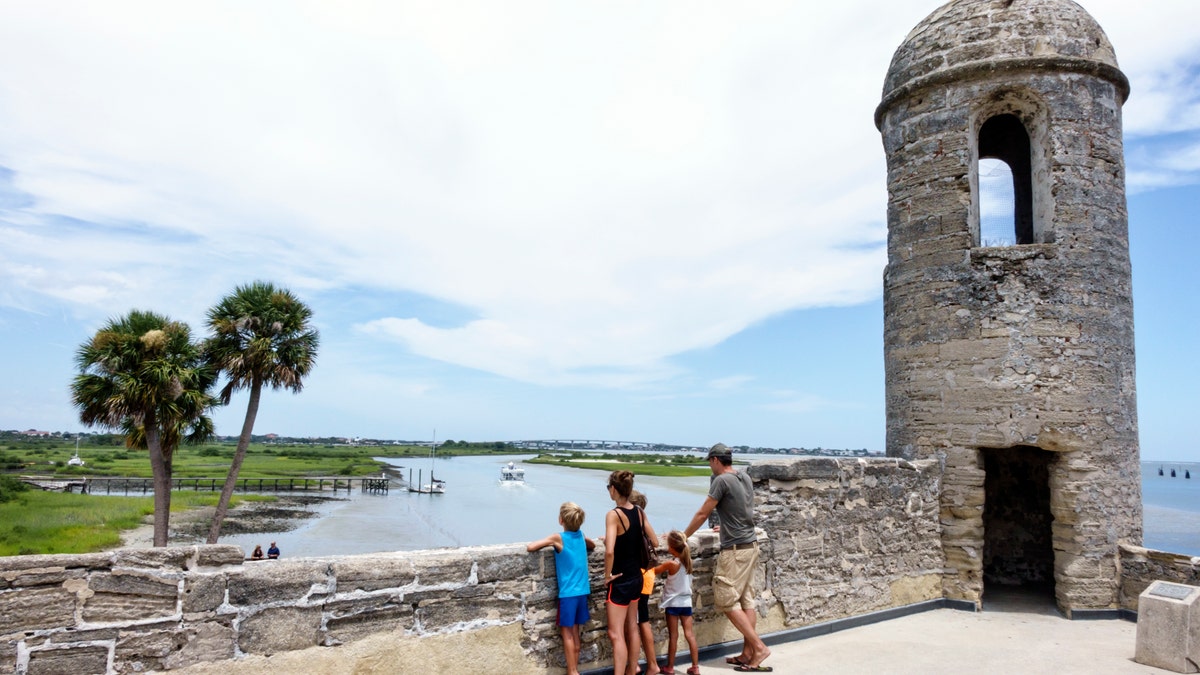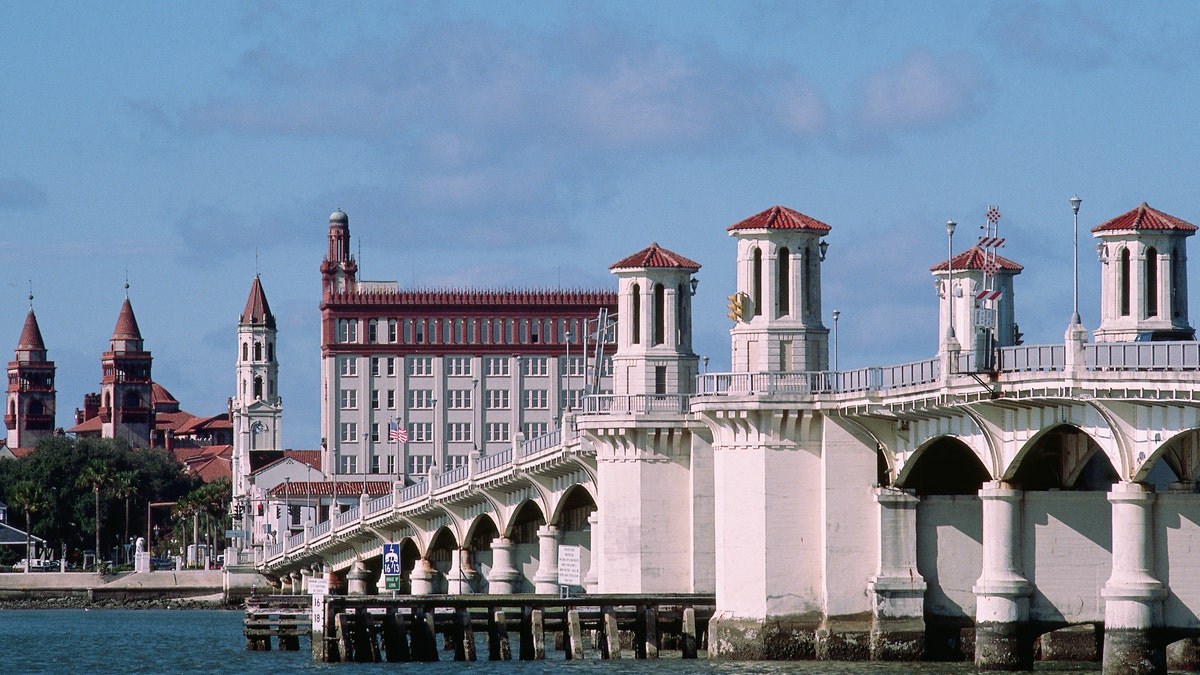'Dancing' bears caught on camera in Florida driveway
Two black bears appeared to be 'dancing' in a Naples, Florida driveway.
Beautiful St. Augustine, Florida, was settled by Spanish admiral Pedro Menendez de Aviles on this day in history, Sept. 8, 1565.
Continuously inhabited now for 457 years, it's the oldest city in North America.
The colonization of St. Augustine preceded the "lost colony" of Roanoke, Virginia, by 20 years, the first permanent English settlement at nearby Jamestown by 42 years, and the iconic Pilgrim landing site of Plymouth, Mass., famously settled in 1620, by more than half a century.
ON THIS DAY IN HISTORY, SEPT. 7, 1813, UNCLE SAM BECOMES SYMBOL OF NATION DURING WAR OF 1812
Spanish explorer Menendez de Aviles "landed ashore at an inlet (later called Matanzas Inlet) on the eastern coast of today’s Florida," Smithsonian Magazine noted about the founding of the city.
"Planting the Spanish flag, he declared the harbor and surrounding land in the name of the Spanish Empire and began setting up a permanent settlement. He named it after St. Augustine, the patron saint of brewers."

Pedro Menendez de Aviles, 1519 to 1574. Spanish admiral, founder of St. Augustine, Florida, and first governor of Florida. After a work by Francisco de Paula Marti. (Universal History Archive/Universal Images Group via Getty Images)
The explorer set foot on the Florida coast "with much pomp and circumstance and 600 voyagers cheering," the City of St. Augustine says on its website.
RESTAURANTS IN DEEP-BLUE CITIES STARVED FOR DINER WHILE FLORIDA IS FEASTING
St. Augustine occupies an idyllic stretch of the Atlantic Coast of north Florida, about 40 miles south of sprawling Jacksonville.
The colonial downtown is protected from the whims of the ocean by Anastasia Island, a barrier island that's now home to St. Augustine Beach.
Pedro Menendez de Aviles set foot in Florida "with much pomp and circumstance and 600 voyagers cheering."
Its protected anchorage is what made St. Augustine desirable to early explorers.
Ponce de Leon reportedly surveyed the area around St. Augustine in 1513, naming the verdant land Florida, the Spanish world for "flowery."

A family at the sentry post at the Castillo de San Marcos National Monument. (Jeffrey Greenberg/Universal Images Group via Getty Images)
Ponce de Leon’s Fountain of Youth Archeological Park pays homage to St. Augustine's history today.
MASSIVE FLORIDA ALLIGATOR SEEN STRAPPED TO BACK OF SUV
Other period attractions include Castillo de San Marcos, an oceanfront fortress that boasts the oldest masonry structure in the United States; the Oldest Wooden Schoolhouse, built of cedar and cypress that educated both boys and girls as early as 1788; and Fort Matanzas National Monument, an offshore fortress south of the city made from coquina, hardened seashell stone, built in 1742.

The regal Bridge of Lions crosses Matanzas Bay from downtown St. Augustine. The town is filled with many historic buildings as the first settlement in the U.S. by Spaniards on the Florida coast. (Nik Wheeler/Corbis via Getty Images)
Patron saint of brewers St. Augustine himself would be proud of the city's thriving craft-beer scene.
A1A Ale Works, Ancient City Brewing and Dog Rose Brewing are among those that slake the thirst of downtown St. Augustine explorers today.
CLICK HERE TO SIGN UP FOR OUR LIFESTYLE NEWSLETTER
St. Augustine served as both the colonial and briefly state capital of Florida for more than 200 years, before the state's administration was moved to Tallahassee in 1824.
The city remains rightly proud of its legacy.
St. Augustine served as both the colonial and briefly state capital of Florida for more than 200 years.
"Vestiges of the First Spanish Colonial Period (1565 to 1764) remain today in St. Augustine in the form of the town plan originally laid out by Governor Gonzalo Méndez de Canzo in the late 16th century and in the narrow streets and balconied houses that are identified with the architecture introduced by settlers from Spain," the City of St. Augustine indicates on its website.
CLICK HERE TO GET THE FOX NEWS APP
"Throughout the modern city and within its Historic Colonial District, there remain 36 buildings of colonial origin and another 40 that are reconstructed models of colonial buildings."

